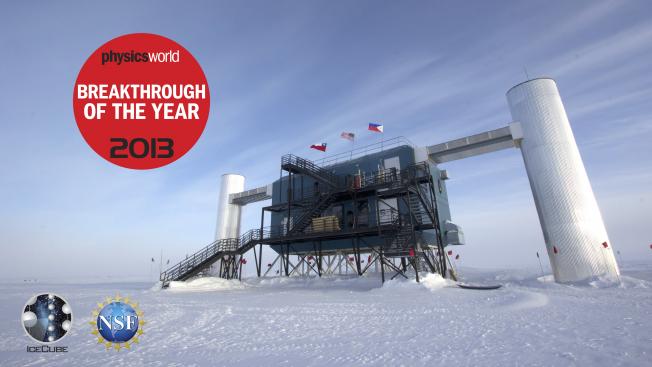Detecting and characterizing pulsar halos with the Cherenkov Telescope Array Observatory
Proceedings of Science 444 (2024)
Abstract:
The recently identified source class of pulsar halos may be populated and bright enough at TeV energies to constitute a large fraction of the sources that will be observed with the Cherenkov Telescope Array (CTA), especially in the context of the planned Galactic Plane Survey (GPS). In this study, we examine the prospects offered by CTA for the detection and characterization of such objects. CTA will cover energies from 20 GeV to 300 TeV, bridging the ranges already probed with the Fermi Large Area Telescope and High Altitude Water Cherenkov Observatory, and will also have a better angular resolution than the latter instruments, thus providing a complementary look at the phenomenon. From simple models for individual pulsar halos and their population in the Milky Way, we examine under which conditions such sources can be detected and studied from the GPS observations. In the framework of a full spatial-spectral likelihood analysis, using the most recent estimates for the instrument response function and prototypes for the science tools, we derive the spectral and morphological sensitivity of the CTA GPS to the specific intensity distribution of pulsar halos. From these, we quantify the physical parameters for which pulsar halos can be detected, identified, and characterized, and what fraction of the Galactic population could be accessible. We also discuss the effect of interstellar emission and data analysis systematics on these prospects.Direction reconstruction for the in-ice radio array of IceCube-Gen2
Proceedings of Science 444 (2024)
Abstract:
The IceCube-Gen2 facility will extend the energy range of IceCube to ultra-high energies. The key component to detect neutrinos with energies above 10 PeV is a large array of in-ice radio detectors. In previous work, direction reconstruction algorithms using the forward-folding technique have been developed for both shallow (≲ 20 m) and deep in-ice detectors, and have also been successfully used to reconstruct cosmic rays with ARIANNA. Here, we focus on the reconstruction algorithm for the deep in-ice detector, which was recently introduced in the context of the Radio Neutrino Observatory in Greenland (RNO-G). We discuss the performance-critical aspects of the algorithm, as well as recent and future improvements, and apply it to study the performance of a station of the IceCube-Gen2 in-ice radio array. We obtain the angular resolution, which turns out to be strongly asymmetric, and use this to optimize the configuration of a single station.H.E.S.S. realtime follow-ups of IceCube high-energy neutrino alerts
Proceedings of Science 444 (2024)
Abstract:
The evidence for multi-messenger photon and neutrino emission from the blazar TXS 0506+056 has demonstrated the importance of realtime follow-up of neutrino events by various ground- and space-based facilities. The effort of H.E.S.S. and other experiments in coordinating observations to obtain quasi-simultaneous multiwavelength flux and spectrum measurements has been critical in measuring the chance coincidence with the high-energy neutrino event IC-170922A and constraining theoretical models. For about a decade, the H.E.S.S. transient program has included a search for gamma-ray emission associated with high-energy neutrino alerts, looking for gammaray activity from known sources and newly detected emitters consistent with the neutrino location. In this contribution, we present an overview of follow-up activities for realtime neutrino alerts with H.E.S.S. in 2021 and 2022. Our analysis includes both public IceCube neutrino alerts and alerts exchanged as part of a joint H.E.S.S.-IceCube program. We focus on interesting coincidences observed with gamma-ray sources, particularly highlighting the significant detection of PKS 0625-35, an AGN previously detected by H.E.S.S., and three IceCube neutrinos.Multiplicity of TeV muons in extensive air showers detected with IceTop and IceCube
Proceedings of Science 444 (2024)
Abstract:
We report on an analysis of the high-energy muon component in near-vertical extensive air showers detected by the surface array IceTop in coincidence with the in-ice array of the IceCube Neutrino Observatory. In the coincidence measurement, the predominantly electromagnetic signal measured by IceTop is used to estimate the cosmic-ray primary energy, and the energy loss of the muon bundle in the deep in-ice array is used to estimate the number of muons in the shower with energies above 500 GeV ("TeV muons"). The average multiplicity of these TeV muons is determined for cosmic-ray energies between 2.5 PeV and 100 PeV assuming three different hadronic interaction models: Sibyll 2.1, QGSJet-II.04, and EPOS-LHC. For all models considered, the results are found to be in good agreement with the expectations from simulations. A tension exists, however, between the high-energy muon multiplicity and other observables; most importantly the density of GeV muons measured by IceTop using QGSJet-II.04 and EPOS-LHC.Performance update of an event-type based analysis for the Cherenkov Telescope Array
Proceedings of Science 444 (2024)



